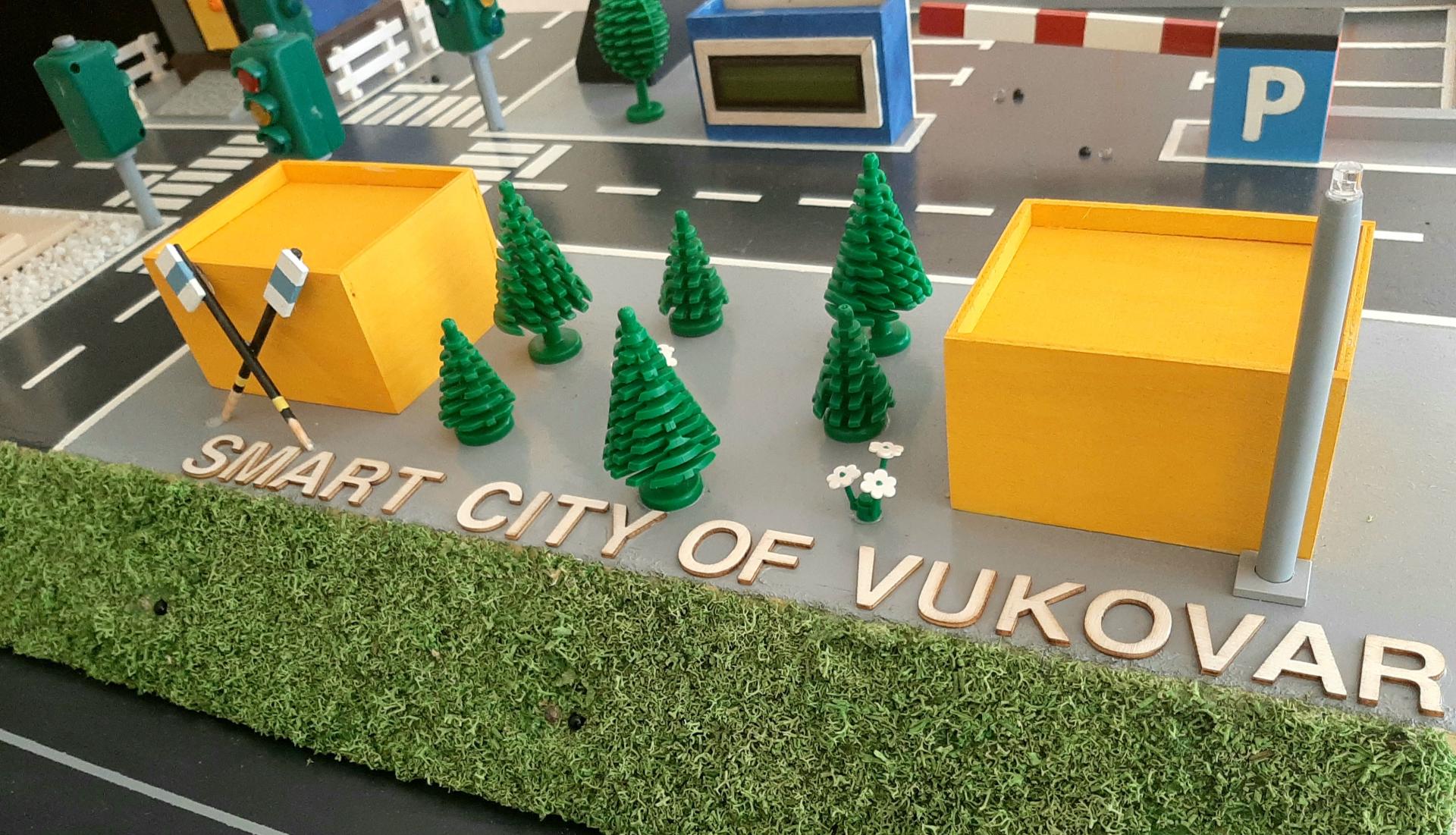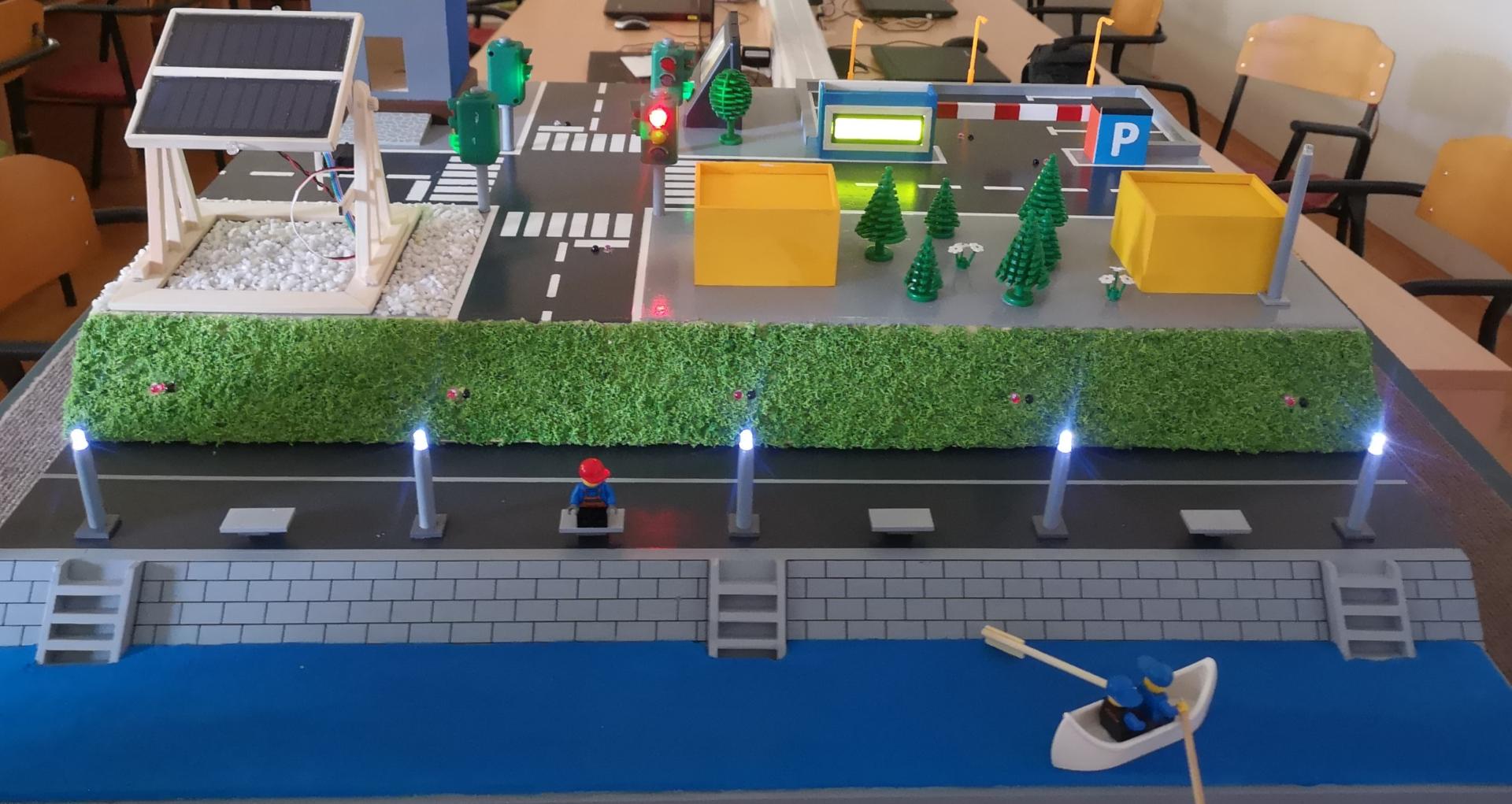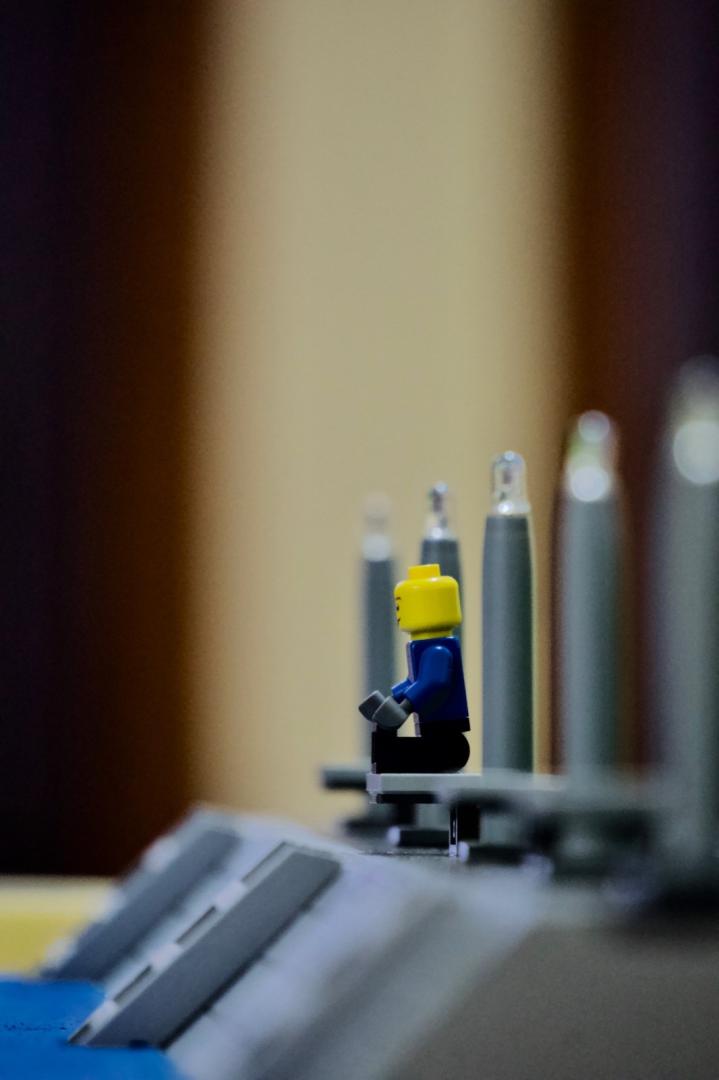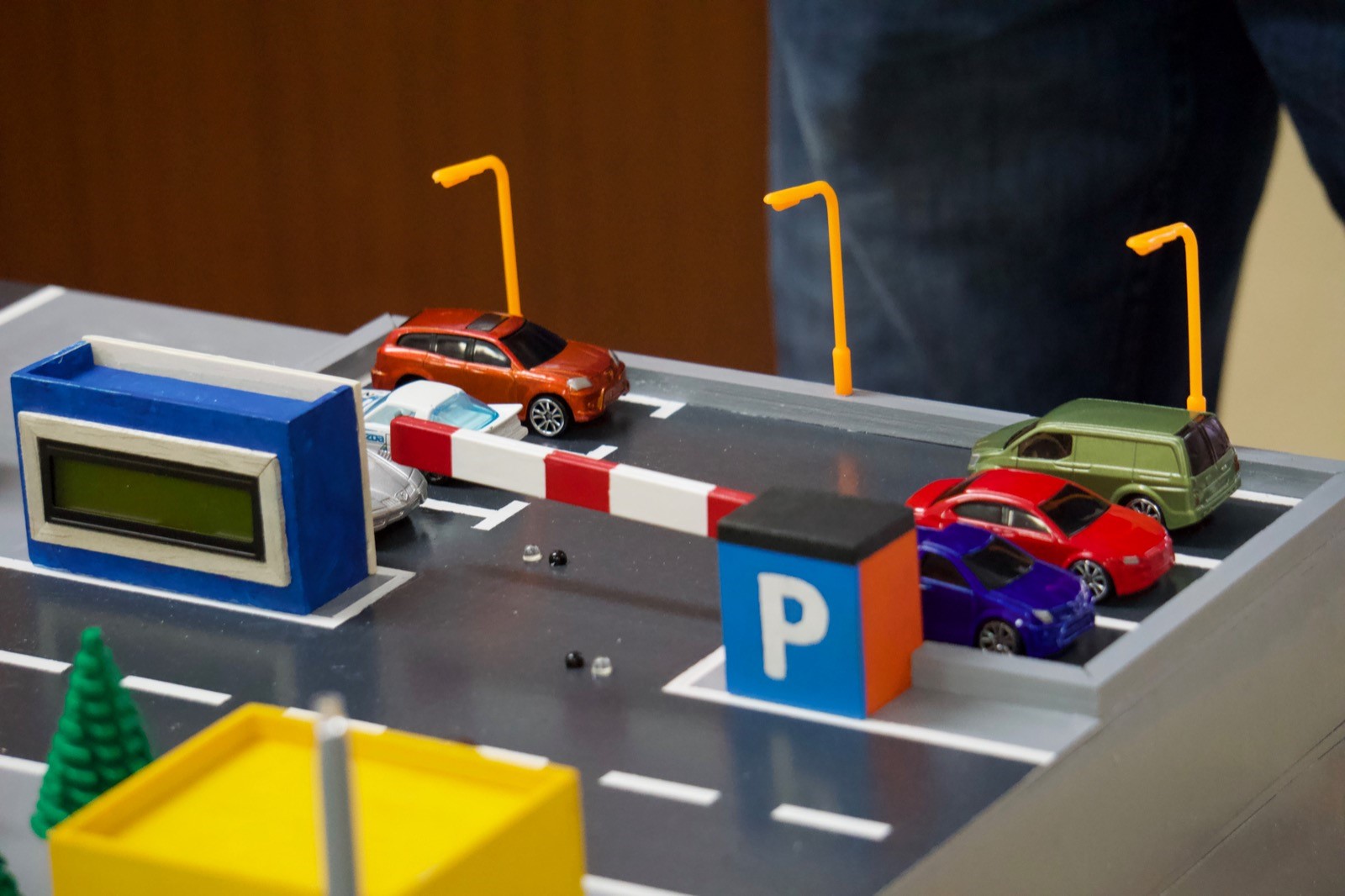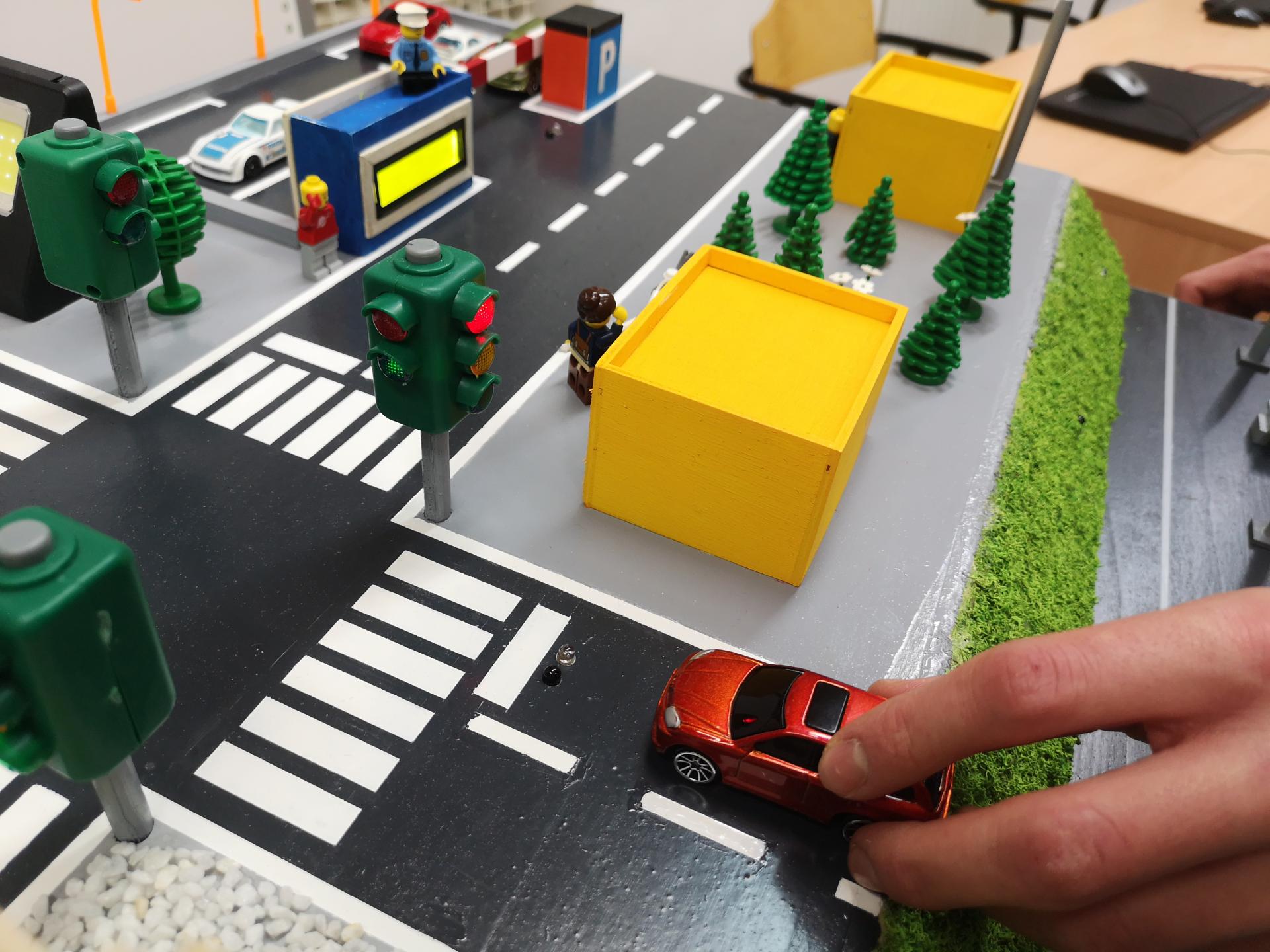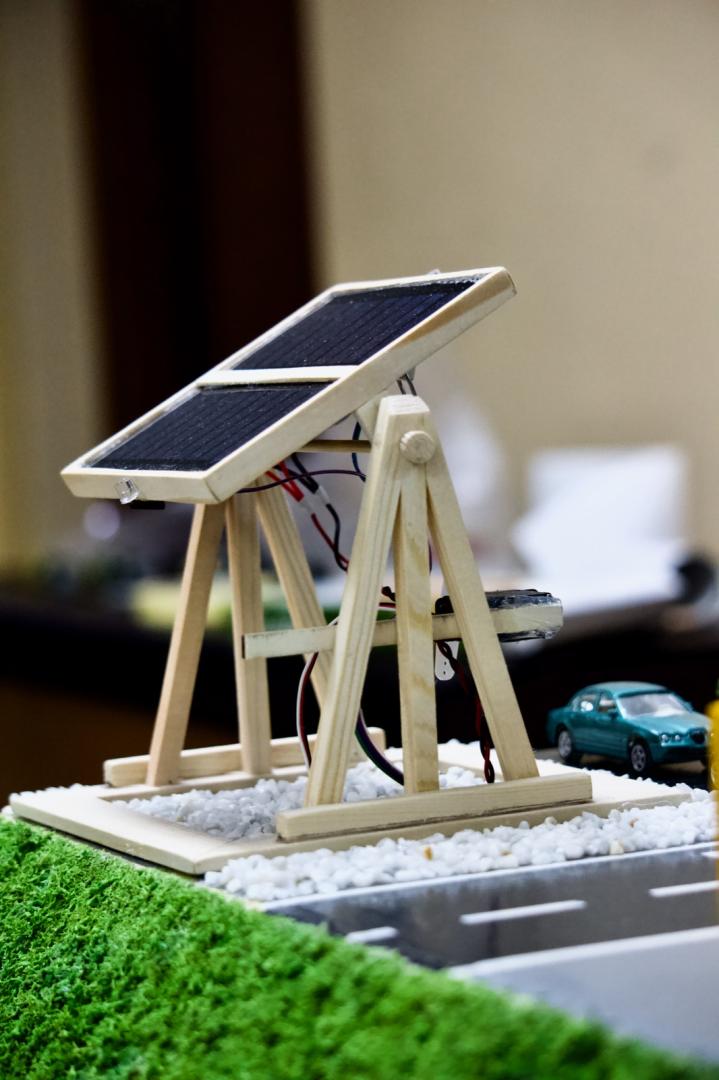Smart city sustainable solutions
Basic information
Project Title
Full project title
Category
Project Description
The model we built and would like to present represents the real projection (look) of one part of the main road in Vukovar leading toward another city in our region as well as the beautiful sidewalk along the bank of the river of Danube. This magnificent model offers a solution in a greater electricity saving, better use of a solar Sun power panels, and reducing the traffic jams on the road as well as around the parking lots. It demonstrates of what a technological future should look like.
Geographical Scope
Project Region
Urban or rural issues
Physical or other transformations
EU Programme or fund
Which funds
Description of the project
Summary
As a result of working on a project with Arduino, we built a model of our hometown Vukovar, Croatia, where we presented some of the ideas about the infrastructure a “Smart city” should have. We named our project “Smart city sustainable solutions”. The model represents the real projection (look) of one part of the main road in Vukovar leading toward another city in our region as well as the beautiful sidewalk along the bank of the river of Danube. The model is powered by Arduino boards and sensors and some of the toys and parts we picked from our homes. In that manner, we created: SMART CITY LIGHTS along the river of Danube. The main principle is that the LED lights are on with a reduced illumination, but as the person approaches every light, the infrared sensor activates the program which turns on the light much brighter. As you leave, it comes back to the original illumination. Our smart city lights offer tremendous savings in electricity consumption. SMART PARKING uses an infrared sensor to determine whether there is an empty parking space available and how many are left at the parking lot. SMART TRAFFIC LIGHTS are very adaptive to the current traffic. By using the infrared sensor placed in the asphalt before the traffic light, it senses the movement, and according to the current situation regulates the traffic. Smart traffic lights let us avoid situations where the driver would have to sit in the car and wait for a green light to come up when there is no one around at the intersection. SOLAR SUN TRACKER uses a photo resistor to adjust the angle of the solar panels according to the strongest source of the Sun light. By using all the sensors and the Arduino boards mentioned above programmed by the Arduino codes, we are able to collect the information in real time, which allows us to more efficiently plan and implement utilization of the urban infrastructure as being the foundation of every “Smart city”.
Key objectives for sustainability
To place our future goals in today's context of energy transition, it is important to see the impact of traffic on the inhabitants of the city. Traffic was responsible for almost one quarter of EU greenhouse gas emissions for 2017, making it the second largest polluter since the energy industry. According to European Environment Agency statistics, traffic emissions generally represent an upward trend (continued growth in the period from 1990 to 2007, followed by a slight decline of 6%, which lasted until 2014, mainly because of the global economic recession and since then they have been growing again). At the same time, it is important to point out that within the sector road transport is by far the largest source of pollution, accounting for more than 72% of all greenhouse gas emissions from transport. In this regard and based on the fact that the “low emission Mobility Strategy” deals with a 60% reduction from 1990 to 2050 level, and that the European Commission encourages a further transition to a lower and zero emission of energy for transport so we decided to make a small contribution with our thoughts and ideas.
Key objectives for aesthetics and quality
SMART CITY LIGHTS along the river of Danube. The main principle is that the LED lights are on with a reduced illumination, but as the person approaches every light, the infrared sensor activates the program which turns on the light much brighter. As you leave, it comes back to the original illumination. Our smart city lights offer tremendous savings in electricity consumption. SMART PARKING uses an infrared sensor to determine whether there is an empty parking space available and how many are left at the parking lot. SMART TRAFFIC LIGHTS are very adaptive to the current traffic. By using the infrared sensor placed in the asphalt before the traffic light, it senses the movement, and according to the current situation regulates the traffic. All new cars have the option of turning off when the red light is turned on at the traffic light, while old cars continue to operate by releasing CO2 and thus polluting the environment. The use of our traffic lights directly reduces CO2 emissions (it reduces the unnecessary waiting and operation of cars). Along with this, we should not forget that today's energy transition does not offer a single solution to the fight against climate change, it is necessary to transform the energy system - from energy production to industry and of course transport. In this regard, this innovation (considering the fact that the transition of the energy sector cannot be implemented without reducing air pollution and decarbonizing the transport sector) undoubtedly gives value to such a model and way of thinking. Transport is now responsible for more than 25% of greenhouse gas emissions in the European Union, out of which road transport accounts for more than 70%. The application of our solution could play a positive role in reducing CO2 emissions in the short term. Looking at this fact from the business side, the sales market would surely be all larger cities. SOLAR SUN TRACKER produces a renewable energy.
Key objectives for inclusion
By using all the sensors and electronic Arduino components interconnected with Arduino codes we get information in real time that enables better efficiency and utilization of one urban infrastructure and are the foundation of smart city. This project unites many activities and thus contributes to the economic development of the community. The benefits of the entire local community are reflected in saving time and creating new jobs. Nowadays, it is of the utmost importance to use time effectively by performing work or other obligations so that people have more time with their families, some excursions or professional and personal training. For this reason, we have come to the idea how to spend less time to search for a free parking space in an overfilled parking or how to reduce waiting time for a green light on an empty road. By saving time, we have an impact on the more cost-effective use of vehicle engines, which ultimately results in lower emissions of harmful exhaust gases. Apart from the efficiency of time, our project is based on the use of high technology and sustainable energy sources. The main energy source is solar panels that collect solar energy and can be used for various purposes. One of the primary conceptual solutions was to use solar energy to power traffic lights, lighting, smart parking ramps, etc. Solar panels are designed to be installed in the form of smart monitors of Sun movements for optimal solar energy collection. By applying this model of the project in reality - real life, energy efficiency would be achieved and increased, but not at the expense of decreasing the quality of life in an urban environment, on the contrary, using state-of-the-art technical solutions and high-tech technologies would contribute to a more efficient and rational energy consumption, to reduce environmental pollution and thus to increase the quality of life of all residents.
Physical or other transformations
Innovative character
By implementing the conceptual solution of our model in reality, we would achieve:
greater energy efficiency in many areas;
the quality of life would be improved by savings from approximatively 3 days per year, which we usually spend on the unnecessary waiting of the green light in traffic and finding a free parking space;
changes would also be reflected in the city budget, because using the method to reduce the intensity of light at times when it is not necessary with the help of smart means to detect presence close to the lighting body would drastically reduce electricity bills, otherwise necessary for public lighting;
another positive change would be an increase in profits in various sectors of the urban-municipal economy.

